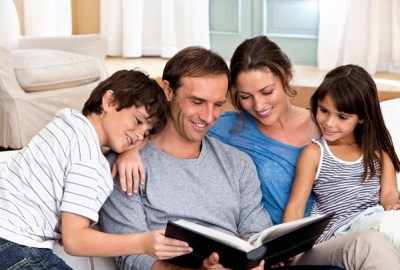If a baby did not have physical care and protection from an adult she would die. If left alone for long periods of the day (even if fed and changed) children become inert, undemanding, and passive. Without love and physical contact babies do not thrive. Although three, seven and 12 year olds still need us to care for them, the level of care is different from that we give to babies: we provide food, but do not put it in their mouths; clothes but we don\'t dress them; keep them safe, but don\'t watch their every move; love them and show affection, but do not smother them with kisses whenever we feel like doing so.
Granting independence is hard. Few of us want to raise an adult who brings his washing home at 40 and is unable to cook a simple meal. Nor, if we are sensible, do we want to raise an adult who remains emotionally dependent upon us. Children should grow, flourish and become independent under our protection. A plant that is always in the shade of another twists and turns to catch the light, as children do when parents fail to let go.
Let go gradually
Sooner or later we have to let go, but the process needs to be gradual. If it happens too soon and too quickly young children find independence frightening and they are likely to become withdrawn or to cling on desperately.
Teach her to voice her own opinions
Let her know you hold opinions: answer the TV when it\'s spouting rubbish; let her listen to adult conversation.
Encourage your child to talk. Find a time each day when you can sit down together and discuss your day. Ask her for an opinion and wait for her answer.
Answer her when she asks why; explain things to her in simple terms.
If possible sit down together for a family meal. Always listen if she wants to join in your conversation. Never rubbish her opinions: \'That\'s a very good thought but...\' is the best way to disagree.
Preparing to go out alone
A one year old can spend a little time playing alone in a room, providing all dangers are removed. (Read more about toddler-proofing your home.)
By two she can draw at the table while you cook, or play at your feet while you phone a friend. The secret is to engage with her every minute or two, a word, a smile or a blown kiss is all it takes.
By three, your child should be walking short distances with you to the post-box or local shop. Walking is good for health and essential for learning road safety. If she sees you look before you cross the road, it will become second to her, too.
Tasks a three-year-old can do
Put away the toys. Make a game of it -- put on a CD and see if everything can be picked up before the music stops.
Help sort the washing. At three she can sort her clothes from the rest of the washing, and the whites from the colours.
Set the table. By three she should be able to set places for the family, but will still need help with the cutlery.
Help with housework. Three year olds can dust, wash the table and mop the floor if you squeeze the mop out for them.
Learning to feed herself
As soon as she can pick up tiny objects with her finger and opposing thumb (around 6-9 months) let her feed herself with tiny sandwiches, little bits of banana, cooked carrot, grated apple etc.
Give her a spoon to hold when feeding her. Getting a spoonful of food from dish to mouth is a messy business and takes time to master. By three she should be able to feed herself with a fork, but will still need her food cutting up for her.
Let your baby hold her cup or bottle even though you control it - gradually pass the control over to her.
Children who practice fine finger skills master these tasks sooner. Give her a fat crayon and a piece of card to scribble on. Look for toys which encourage placing, such as sorting boxes and tray puzzles.









